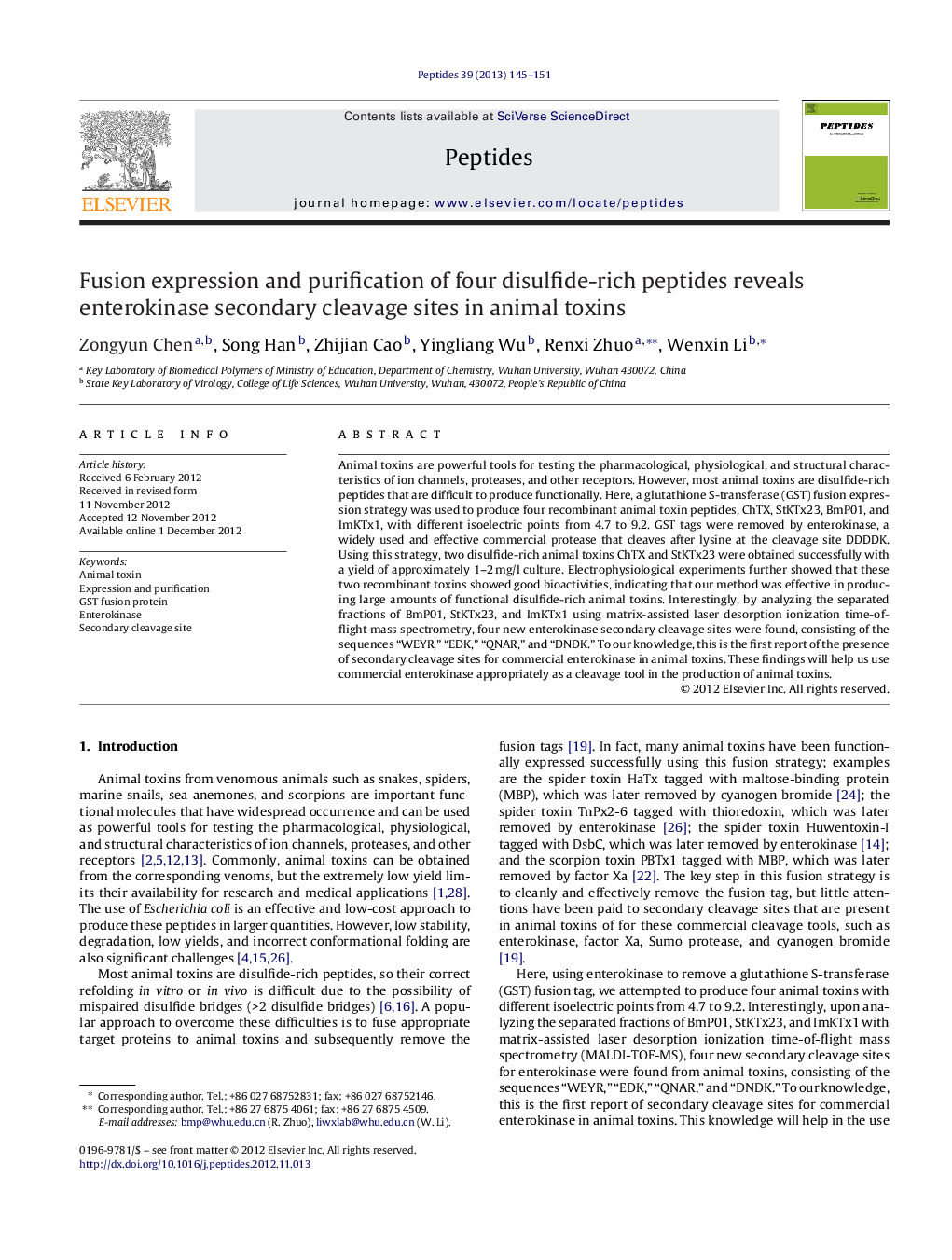| کد مقاله | کد نشریه | سال انتشار | مقاله انگلیسی | نسخه تمام متن |
|---|---|---|---|---|
| 2006294 | 1541740 | 2013 | 7 صفحه PDF | دانلود رایگان |

Animal toxins are powerful tools for testing the pharmacological, physiological, and structural characteristics of ion channels, proteases, and other receptors. However, most animal toxins are disulfide-rich peptides that are difficult to produce functionally. Here, a glutathione S-transferase (GST) fusion expression strategy was used to produce four recombinant animal toxin peptides, ChTX, StKTx23, BmP01, and ImKTx1, with different isoelectric points from 4.7 to 9.2. GST tags were removed by enterokinase, a widely used and effective commercial protease that cleaves after lysine at the cleavage site DDDDK. Using this strategy, two disulfide-rich animal toxins ChTX and StKTx23 were obtained successfully with a yield of approximately 1–2 mg/l culture. Electrophysiological experiments further showed that these two recombinant toxins showed good bioactivities, indicating that our method was effective in producing large amounts of functional disulfide-rich animal toxins. Interestingly, by analyzing the separated fractions of BmP01, StKTx23, and ImKTx1 using matrix-assisted laser desorption ionization time-of-flight mass spectrometry, four new enterokinase secondary cleavage sites were found, consisting of the sequences “WEYR,” “EDK,” “QNAR,” and “DNDK.” To our knowledge, this is the first report of the presence of secondary cleavage sites for commercial enterokinase in animal toxins. These findings will help us use commercial enterokinase appropriately as a cleavage tool in the production of animal toxins.
► A glutathione S-transferase (GST) fusion expression strategy was used to produce four animal toxins.
► GST tags were removed by enterokinase that cleaves after lysine at the cleavage site DDDDK.
► Four enterokinase secondary cleavage sites “WEYR”, “EDK”, “QNAR”, and “DNDK” were found.
► It is the first report of the presence of secondary cleavage sites for commercial enterokinase in animal toxins.
Journal: Peptides - Volume 39, January 2013, Pages 145–151